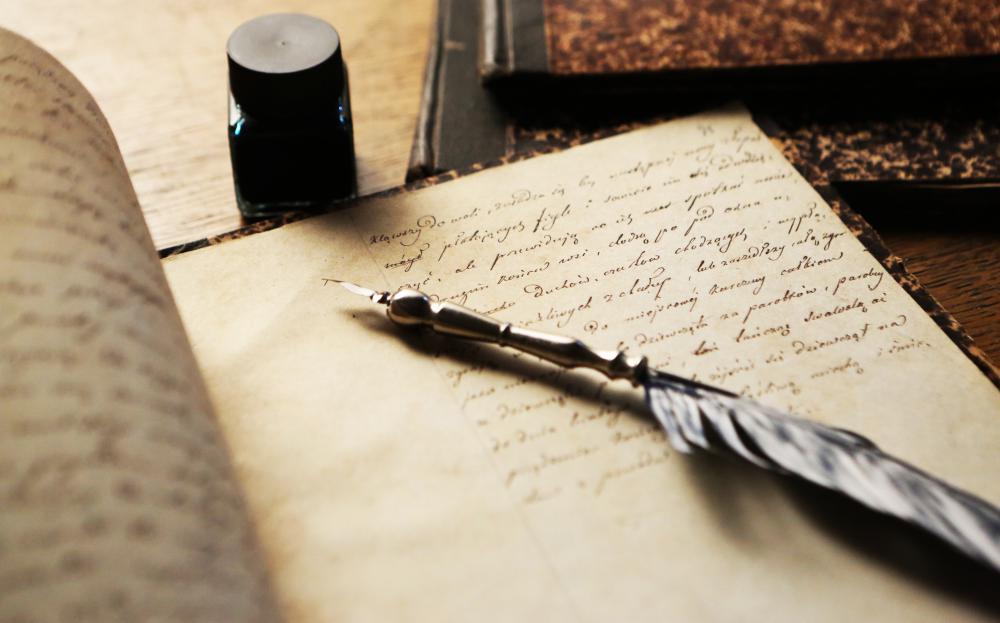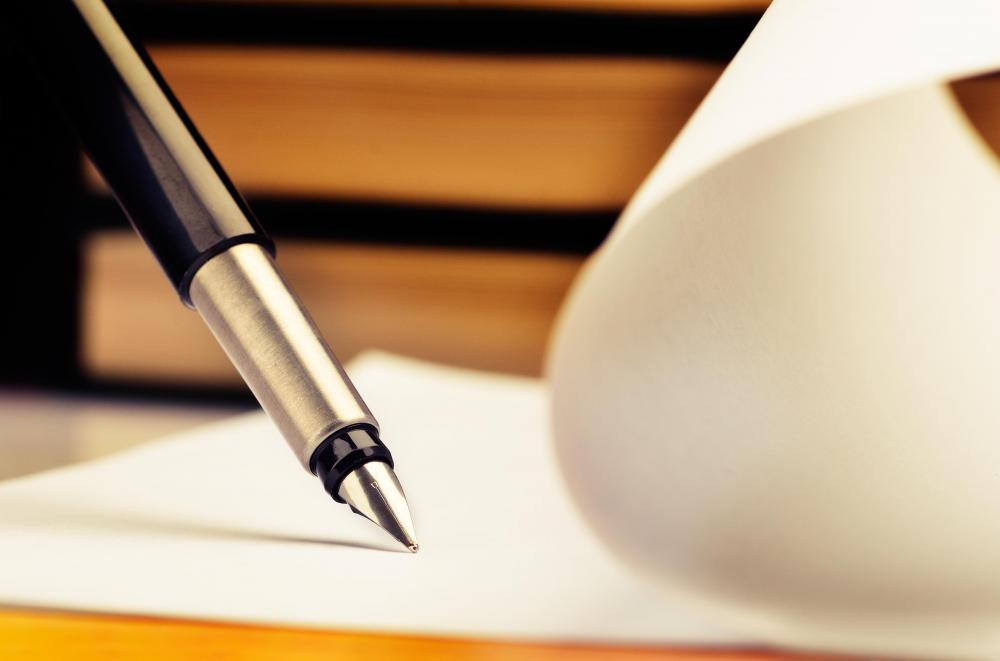At WiseGEEK, we're committed to delivering accurate, trustworthy information. Our expert-authored content is rigorously fact-checked and sourced from credible authorities. Discover how we uphold the highest standards in providing you with reliable knowledge.
What Are the Best Tips for Writing in Calligraphy?
Calligraphy can turn ordinary invitations, letters, or art projects into something amazing. Some of the best tips for writing in calligraphy are to use a separate piece of paper to get rid of the excess ink each time that you refill the pen and to use pressure changes to alter the thickness of the line rather than twisting the pen itself. Holding the writing utensil correctly is essential when writing in calligraphy, and it can also be helpful to think of writing in this manner as drawing rather than simply conveying a message.
Whether you use an automatic calligraphy pen or a traditional quill, the ink can easily collect in the tip after the pen or quill has been sitting or right after you dip it into the ink. To prevent smearing, blobs, or too-thick lines, do a few strokes on a separate piece of paper before you start writing in calligraphy. This will prevent mistakes on your actual project, keeping your letters smooth and beautiful.

If you’re new to calligraphy, you may be tempted to twist the pen if you want to make a line thicker or thinner; however, this will not produce the desired results. Calligraphy pens are designed for the ink to come evenly out of the quill when pressure is applied correctly; therefore, turning the pen will typically result in skipped or jagged lines. If you want to adjust the thickness of a stroke, simply apply a little more or less pressure. More pressure will result in a higher ink flow and therefore a thicker line, while less will cause a lower ink flow, and thus a thinner line.

The manner in which you hold the pen or quill is essential when writing in calligraphy. The end of the writing utensil should rest on the side of your index finger’s lowest knuckle. Letting the end of the pen sit on the soft spot between your thumb and index finger will give you less control over the pen, resulting in messier calligraphy. It is also a good idea to hold the pen as lightly as possible for the most fluid, even lines; for many people, a tight grip can cause a shaky hand.

Perhaps the best tip for calligraphy is to think of it more as a type of art rather than a means of conveying a message. Oftentimes, people put little thought into how they are writing something on a daily basis, as the message is more important. When writing in calligraphy, however, the way each letter looks is just as important, if not more so, than what the words actually say. Try to view each letter as a separate image, and the entire project as a whole picture for the best results.
AS FEATURED ON:
AS FEATURED ON:













Discussion Comments
@umbra21 - It's actually designers who often take calligraphy classes, particularly in college, because it's really useful to know about calligraphy in order to work with fonts and create new ones.
There's actually a story about how Steve Jobs took a calligraphy class out of interest when he was at university and that's the only reason why we have lots of pretty fonts today, because he realized that there was a point to making them more than just functional and that it was worth putting in more than one kind of font into a computer system.
There's actually a huge amount of information about calligraphy if you take a good course on it. I think the average course is essentially just about practicing with a teacher available to help you when you do something wrong though.
@Ana1234 - I don't think the average person needs a course to do calligraphy. Maybe a short article or book would help, but unless they are hoping to do a lot of it, or do something really fancy, there's no need to get too technical.
It might be interesting to study the history of calligraphy and to learn about the different kinds and tools and shapes, but I think most of the time people just want to be able to provide a little bit of an extra flourish on their wedding invitations.
If you are really interested in calligraphy, then you should probably take a course on it, or at least read a couple of books on it. It's an art like any other and you need to understand how it works before you can really do much with it.
The other tip is to practice as much as possible. Get a cheap nib pen and some Indian ink and just make a whole bunch of marks so that you can see how the pen works and start to get an intuition for it. It can be really difficult to get the hang of using pressure as a way to make lines thicker or thinner, but the more you practice, the more it will become second nature to you.
Post your comments